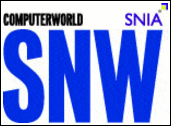
Yesterday I was on a panel at SNW in Orlando Florida. The panel was hosted by Dave Vellente, Founder of Wikibon and always a great host for these kinds of things. On the panel was Larry Freeman of NetApp, Craig Nunes of HP (formally 3Par), Jarred Floyed CTO / Founder at Permabit and myself, IBM (formally Storwize).
Some interesting data came out of this panel. There were probably over 150 people in the audience. It was a well-attended session. Also, Dave is VERY good about asking the audience questions. Let me start by making sure we all know where everyone sits at the “storage efficiency table” that was on the panel.
- Larry Freeman is from NetApp – they claim, and I believe them, that they have 10 storage efficiency technologies that are embedded into WAFL
- Craig Nunes main focus on the panel was ‘zero reclamation’ to optimize storage
- I have a Real-time Compression drum I am beating
- Jarred Floyed focuses on data deduplication
Here are some questions and answers Dave got when speaking to the audience:
Dave’s Question | Audience Response (in close estimated %) |
| How many people use deduplication / compression in their storage? | 60% responded they did use one or both of these technologies in their environment |
| How do users use these technologies - embedded or appliance? | 100% of the 60% said "embedded" |
| Who is your storage vendor was that provided these technologies? | 100% of the 60% said NTAP |
| What is the number 1 issue was with the embedded solution and making it not more widely adopted? | Performance was the answer. They all believed that for 70% of their applications, the embedded solution was “good enough” but for 30% where performance is critical – it couldn’t do the job. |
| Why are not more appliances deployed to solve the performance issues? | The response was that customers didn’t want to have to manage multiple solutions in their environment doing the same thing. |
| What would it take for wider adoption of appliances if they do provide better performance? | Heterogeneity. In fact, there would be a MUCH wider adoption of the appliance if it could provide heterogeneity of all storage efficiency technologies across all data sets. |
| Another key answer here too was automation. If the appliance could automatically “do what it needed to do” to solve performance and optimization issues while maximizing the overall $/TB that would drive adoption |
One last comment too that Larry Freeman stated was that NetApp has 10 storage optimization / efficiency technologies embedded into WAFL. The interesting thing is that NetApp gets a report from 150,000 systems that "report in" over the weekend and they have collected statistics that users only use 3.2 out of these 10 efficiency technologies on average.
When the question was posed "why" is it that you have technology, that is “free” (more on that later) that can help you better optimize your storage, why they don’t turn it on? To which the end user response was that they didn't want any change in the infrastructure that could require a change in their processes. (This means that transparency is another thing that an appliance has to ensure it has.)
I also want to publicly commend Larry for a good deal of his comments and his honesty. See Larry and I are technologists and sometimes we see the marketing arms of our companies sometimes stretch the truth to get what they want in the market by way of some FUD. My example is this. The RtC technology does provide high compression, for the life of the file without performance degradation. Well, as you can see, this is what customers want give the response from the audience. However, our friends at NetApp will say “yes, but our compression is free” (like that is supposed to be better). Anyway, Larry addressed this in the same way I do. He said that “you don’t get anything for free and there are tradeoffs, specifically in this case around performance”. Now, I am not saying this to say “see, I told you so” I am saying it because we, as technologists, want to give the user the best answer. I also admitted that an embedded strategy for technology is the right way to go, IF you can accomplish what the end users’ needs are, performance in this case.
Look, there is a reason why startups exist and why appliances exist. Storwize didn’t invent compression; they invented a real-time platform that allowed compression to happen in real time. We do “compression off load”. We take the work off the array and put it on the appliance – how could that not be faster. And yes, one day it will be embedded and there will be some other new great optimization technology that will start as an appliance and slowly find its way into the array. It is the evolution of technology.
At the end of the day, here is what I have to say. Every end user buys their storage for a reason. It may be performance; it may be capacity who knows. What I ask each user to do is to consider their BUSINESS needs for their storage and apply the RIGHT storage optimization technologies for their given environments. There is not a “one size fits all” approach (this is why NetApp customers don’t choose to turn on all 10 optimization / efficiency technologies) but there are a handful that can help you get the most out of your storage.